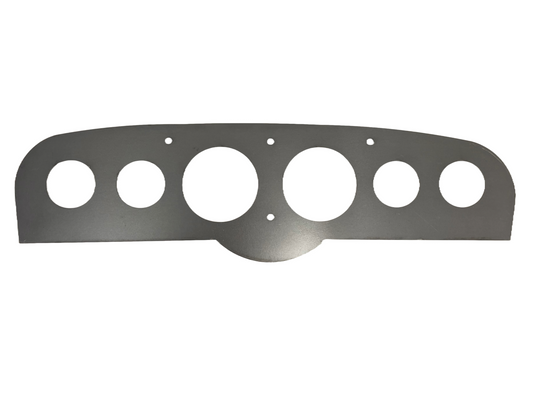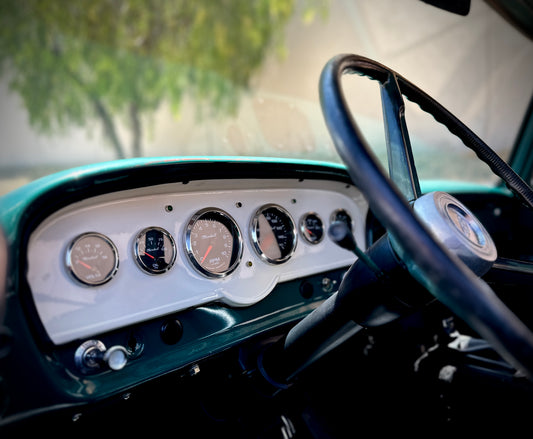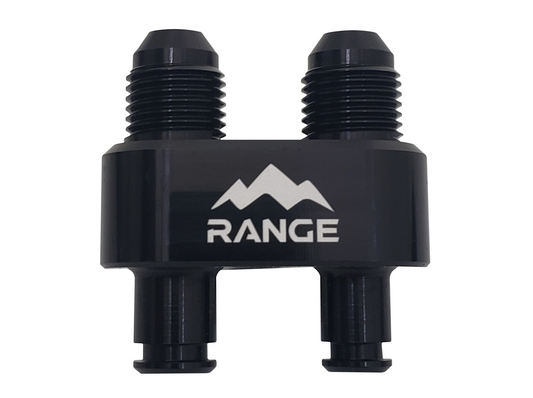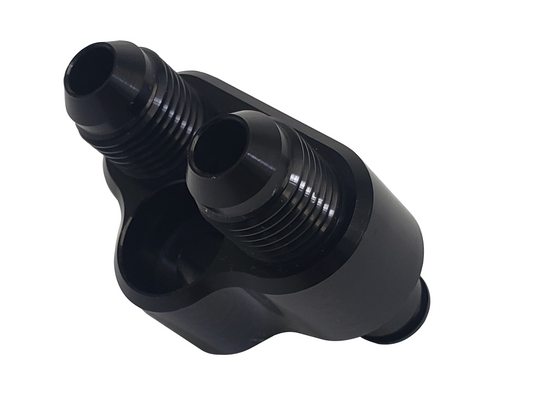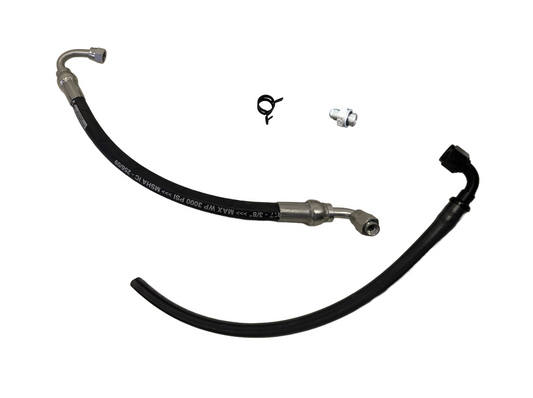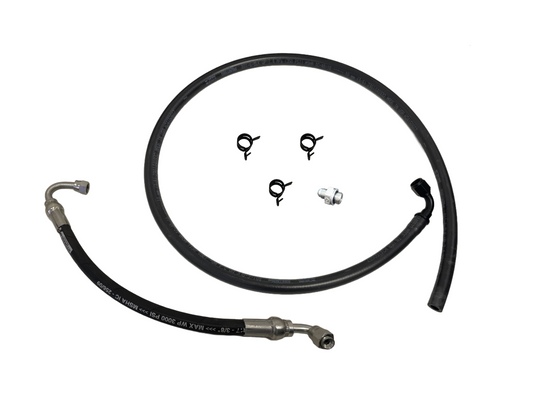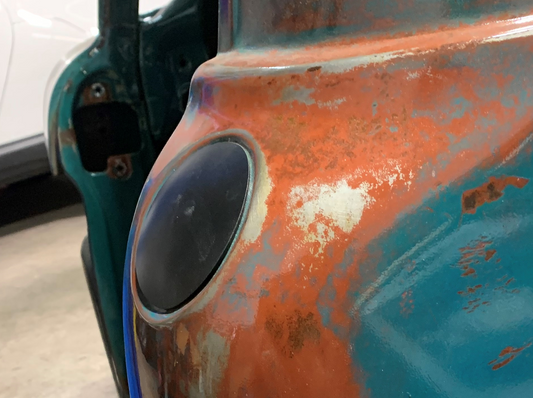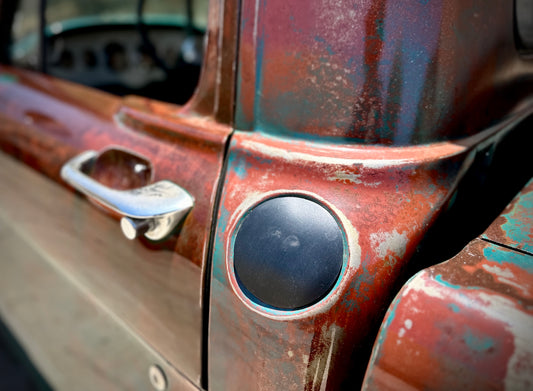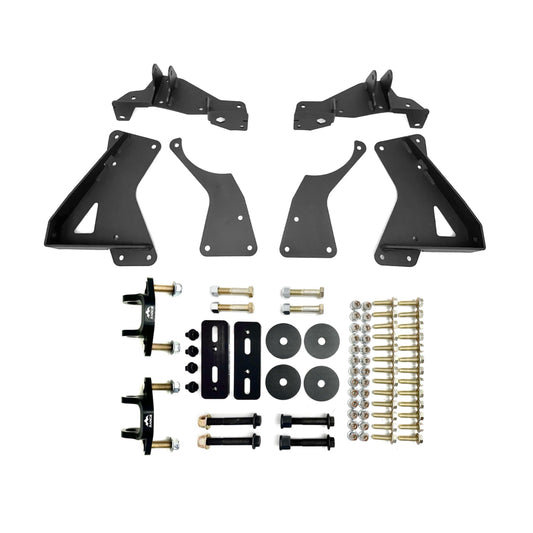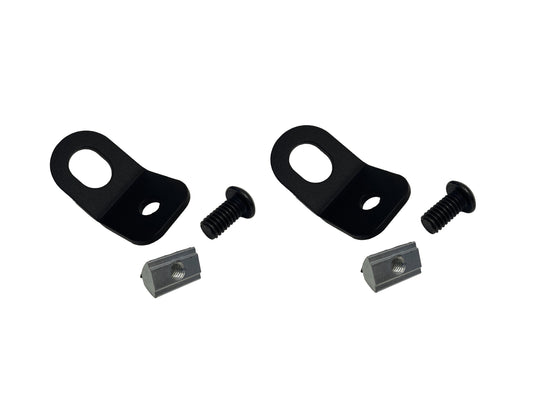Ford F100 (1961 - 1978)
Range Industries collection of Ford F100 products are tailored for customizing your vehicle's interior, suspension, and more! Featuring our suspension conversion kits, dash inserts, brake upgrades, restomod products, and more!
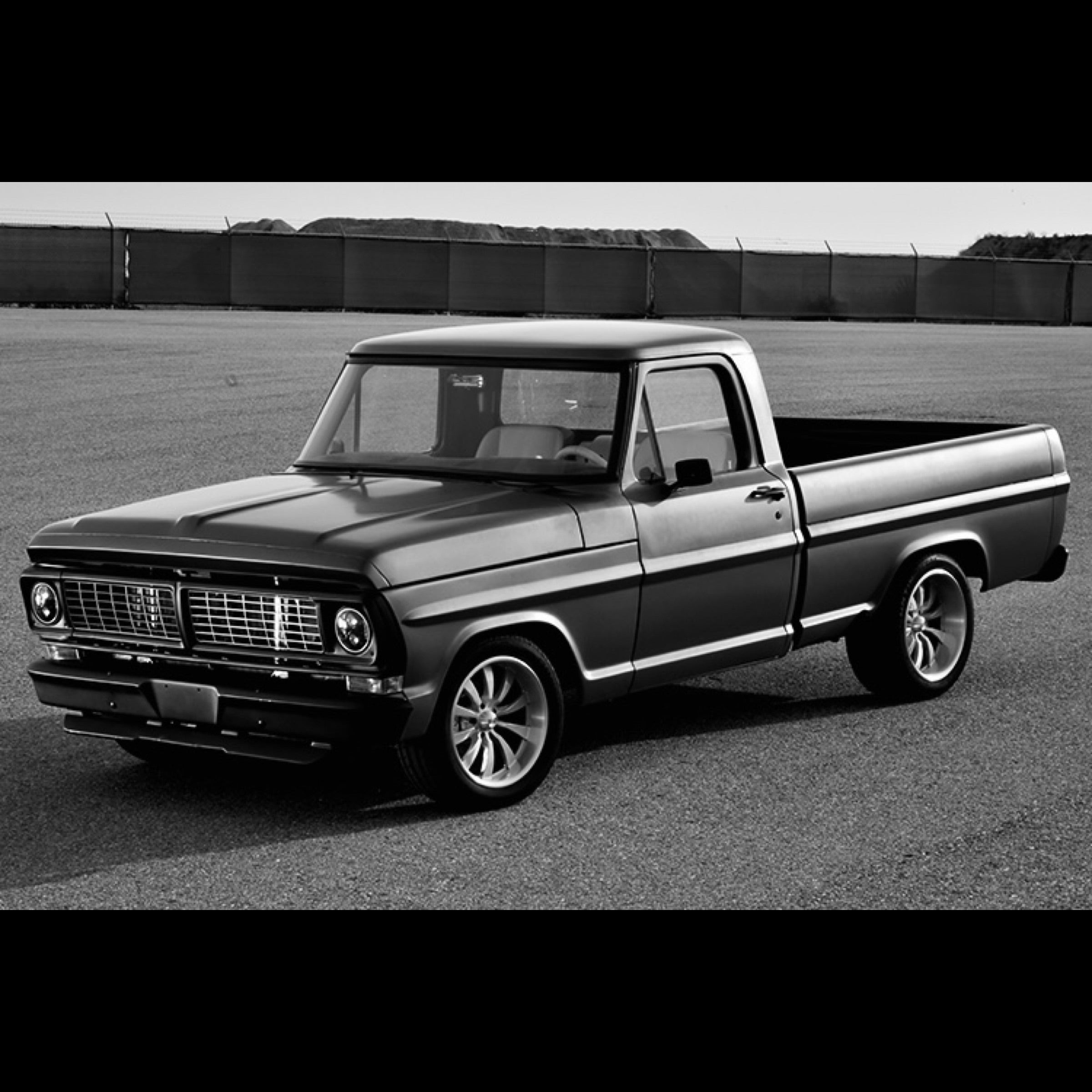
-
1961-1966 F-100 and F-250 Dash Insert
Regular price $40.00 USDRegular priceUnit price / per -
Crown Victoria -6 AN Steering Rack Adapter
Regular price $65.00 USDRegular priceUnit price / per -
Crown Victoria to LS power Steering Hose Kit
Regular price From $110.00 USDRegular priceUnit price / per -
1961-1966 F-100 and F-250 Fuel Fill Delete
Regular price $32.00 USDRegular priceUnit price / per -
Explorer 8.8 Brake kit with Electric Parking Brake
Regular price $224.00 USDRegular priceUnit price / per -
1973-1979 38" F-100 S-550 Mustang Rear suspension Mounting Kit
Regular price $795.00 USDRegular priceUnit price / per -
5/16"-18, 45 Degree Tie Down Point, Single Bolt (2 Pack)
Regular price $20.00 USDRegular priceUnit price / per -
5/16"-18, 90 Degree Tie Down Point, 2 Bolt (2 Pack)
Regular price $30.00 USDRegular priceUnit price / per
About Ford F100
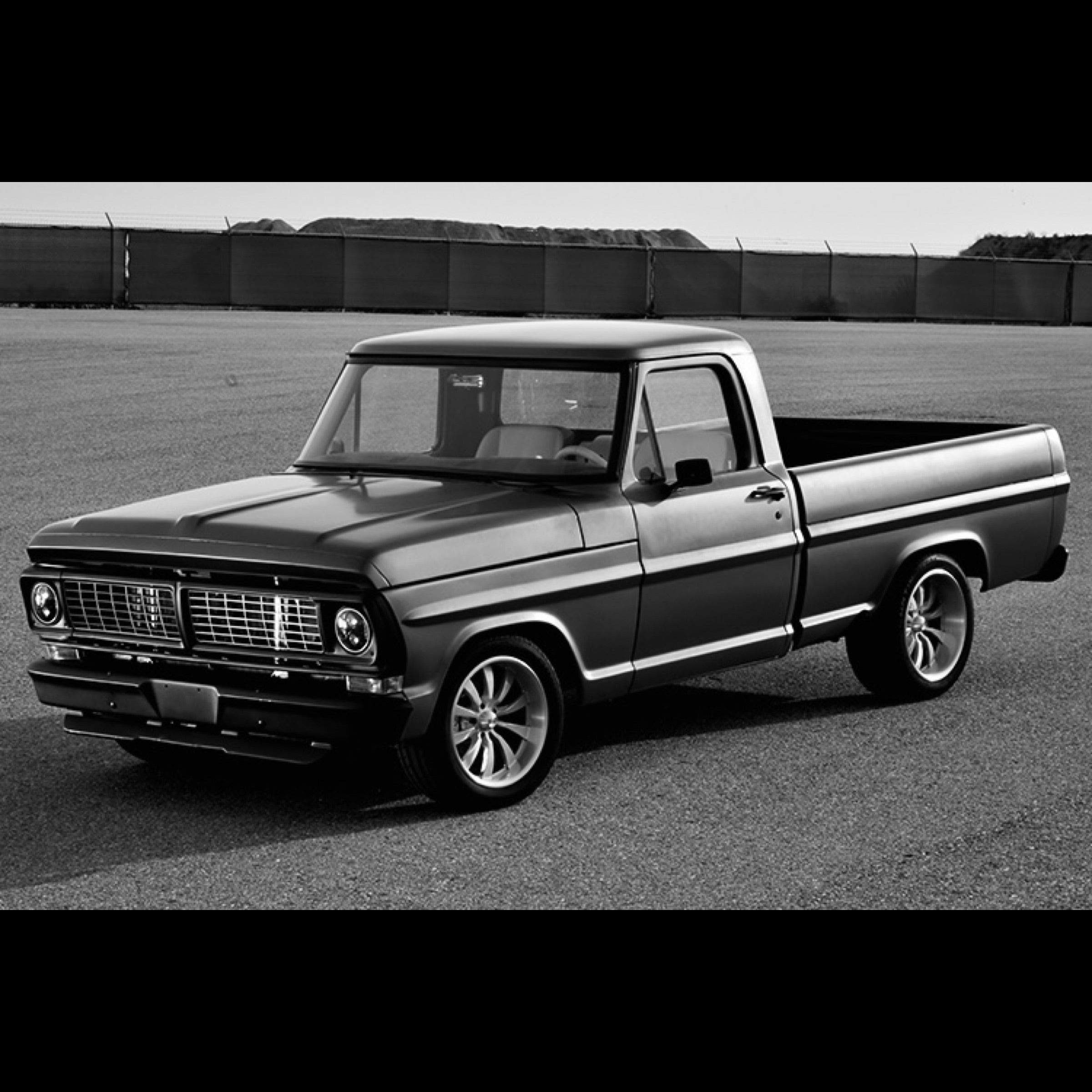
Ford F100 History
The Ford F100 is an iconic vehicle that holds a special place in automotive history. First introduced in 1953 as part of Ford's F-Series lineup, the F100 quickly became a favorite among truck enthusiasts and working professionals alike.
The early models of the F100 featured a classic design characterized by its robust build, sturdy frame, and powerful engine options. It was initially offered with a range of inline-six and V8 engines, providing drivers with ample power and reliability for their various hauling and towing needs.
Throughout its production run, the F100 underwent several design and engineering updates to keep pace with evolving market demands and technological advancements. In the 1960s, Ford introduced significant design changes, giving the F100 a more modern and streamlined appearance while maintaining its reputation for durability and performance.
In the 1970s, the F100 saw further updates, including improvements to safety features, comfort, and fuel efficiency. This decade also marked the introduction of more powerful engine options, catering to drivers who required even greater towing and payload capacities.
As the automotive industry entered the 1980s and beyond, the F100 continued to evolve, adapting to changing consumer preferences and regulatory requirements. However, by the late 1980s, Ford made the strategic decision to discontinue the F100 model in favor of focusing on larger and more capable trucks within the F-Series lineup.
Despite its discontinuation, the Ford F100 remains a beloved classic among truck enthusiasts and collectors. Its timeless design, rugged performance, and significant contributions to the automotive industry ensure its enduring legacy for generations to come.
Ford F100 Specs
The Ford F100 is a legendary pickup truck that has stood the test of time, known for its rugged durability and powerful performance. Here's a detailed breakdown of its technical specifications:
Engine Options:
- The Ford F100 typically offers a range of engine options to suit various needs and preferences.
- One popular choice is a robust V8 engine, delivering ample power and torque for hauling heavy loads and tackling tough terrain.
- Engine displacement may vary depending on the model year and trim level, but common options include 4.9L (300 cubic inches) and 5.8L (351 cubic inches) variants.
Transmission:
- The F100 is commonly equipped with a manual transmission, providing drivers with precise control over gear shifts and enhanced towing capabilities.
- Automatic transmission options may also be available, offering smooth and effortless gear changes for a more relaxed driving experience.
Drivetrain:
- Rear-wheel drive (RWD) is the standard drivetrain configuration for the Ford F100, offering excellent traction and stability, particularly when carrying heavy loads.
- Some models may feature optional four-wheel drive (4WD) for enhanced off-road capability, allowing the F100 to conquer challenging terrain with confidence.
Suspension:
- The F100 is equipped with a robust suspension system designed to provide a comfortable ride, even when traversing rough roads or uneven terrain.
- Front independent suspension and rear leaf spring suspension contribute to responsive handling and superior load-carrying capacity.
Brakes:
- Power-assisted disc brakes on the front wheels and drum brakes on the rear wheels ensure reliable stopping power, even when towing heavy trailers or hauling substantial cargo.
- Anti-lock braking system (ABS) may be available as an option on certain models, enhancing braking performance and safety in adverse road conditions.
Towing Capacity:
- The Ford F100 is renowned for its impressive towing capacity, allowing it to effortlessly haul trailers, boats, and other heavy loads.
- Depending on the engine and drivetrain configuration, towing capacity may vary, but it typically ranges from several thousand pounds to over 10,000 pounds when properly equipped.
Payload Capacity:
- The F100 boasts a generous payload capacity, enabling it to transport bulky cargo and equipment with ease.
- Payload capacity varies depending on factors such as engine choice, suspension setup, and bed configuration, but it can often exceed 1,500 pounds or more.
Fuel Efficiency:
- While fuel efficiency may not be the F100's primary focus, advancements in engine technology and aerodynamics have helped improve overall fuel economy over the years.
- Actual fuel efficiency will vary depending on driving conditions, payload, and engine choice, but drivers can expect reasonable mileage for a vehicle of its size and capability.
Dimensions:
- The Ford F100 typically features a spacious cabin with ample room for passengers and storage, making it suitable for both work and leisure activities.
- Bed length and cab configurations may vary depending on the model year and trim level, offering flexibility to accommodate different needs and preferences.
Overall, the Ford F100 is a versatile and dependable pickup truck that continues to be cherished by enthusiasts and admired for its timeless design, robust performance, and legendary durability.
Popular Ford F100 Parts
The Ford F100 is a classic American truck that has captured the hearts of enthusiasts for generations. With its rugged design and reliable performance, it's no wonder that owners often seek to enhance its capabilities and aesthetics through various parts and upgrades. Here's a rundown of some popular modifications for the Ford F100:
- Suspension Upgrades: Many F100 owners opt for suspension upgrades to improve ride quality, handling, and off-road capabilities. This can include lift kits to increase ground clearance, upgraded shocks and springs for better damping, and sway bars to reduce body roll.
- Engine Performance: Enhancing the engine performance is a common goal for F100 owners looking for more power and torque. Upgrades may include aftermarket intake systems, performance exhaust systems, headers, upgraded camshafts, and engine tuning to extract more horsepower and torque from the engine.
- Brake Systems: Upgrading the braking system is essential for improving stopping power, especially when the truck is carrying heavy loads or towing. Upgraded brake pads, rotors, calipers, and brake lines can provide better braking performance and reliability.
- Wheels and Tires: Custom wheels and tires not only enhance the appearance of the F100 but also improve its performance on and off-road. Owners often opt for larger diameter wheels and all-terrain or mud-terrain tires for better traction and a more aggressive stance.
- Interior Upgrades: Upgrading the interior can significantly improve comfort and functionality. This may include replacing worn-out seats with aftermarket bucket seats, installing a modern sound system with Bluetooth connectivity, upgrading the dashboard with digital gauges, and adding amenities like air conditioning or power windows.
- Exterior Accessories: F100 owners often personalize the exterior of their trucks with various accessories. This can include aftermarket bumpers, grille guards, bed liners, toolboxes, and custom paint jobs. LED lighting upgrades for headlights, taillights, and auxiliary lights are also popular choices.
- Transmission Upgrades: Upgrading the transmission can improve shifting performance and durability, especially for trucks used for towing or off-roading. Upgraded transmissions, torque converters, and shift kits can provide smoother shifts and better handling of increased power.
- Differential Upgrades: Strengthening the differential is essential for handling increased power and torque without risking component failure. Upgraded differential covers, limited-slip differentials, and aftermarket axles can improve traction and durability, especially in off-road conditions.
- Cooling System Upgrades: Upgrading the cooling system is crucial for maintaining engine temperature, especially in high-performance applications or extreme conditions. Upgraded radiators, electric fans, and coolant reservoirs can help dissipate heat more efficiently and prevent overheating.
- Restoration Parts: For owners looking to restore their F100 to its original glory, a wide range of reproduction and aftermarket restoration parts are available. These include body panels, trim pieces, interior components, and mechanical parts to help bring the truck back to showroom condition.
Whether it's for improved performance, enhanced aesthetics, or restoring a classic, there's no shortage of parts and upgrades available to customize and enhance the Ford F100 to suit the preferences and needs of its owner.

